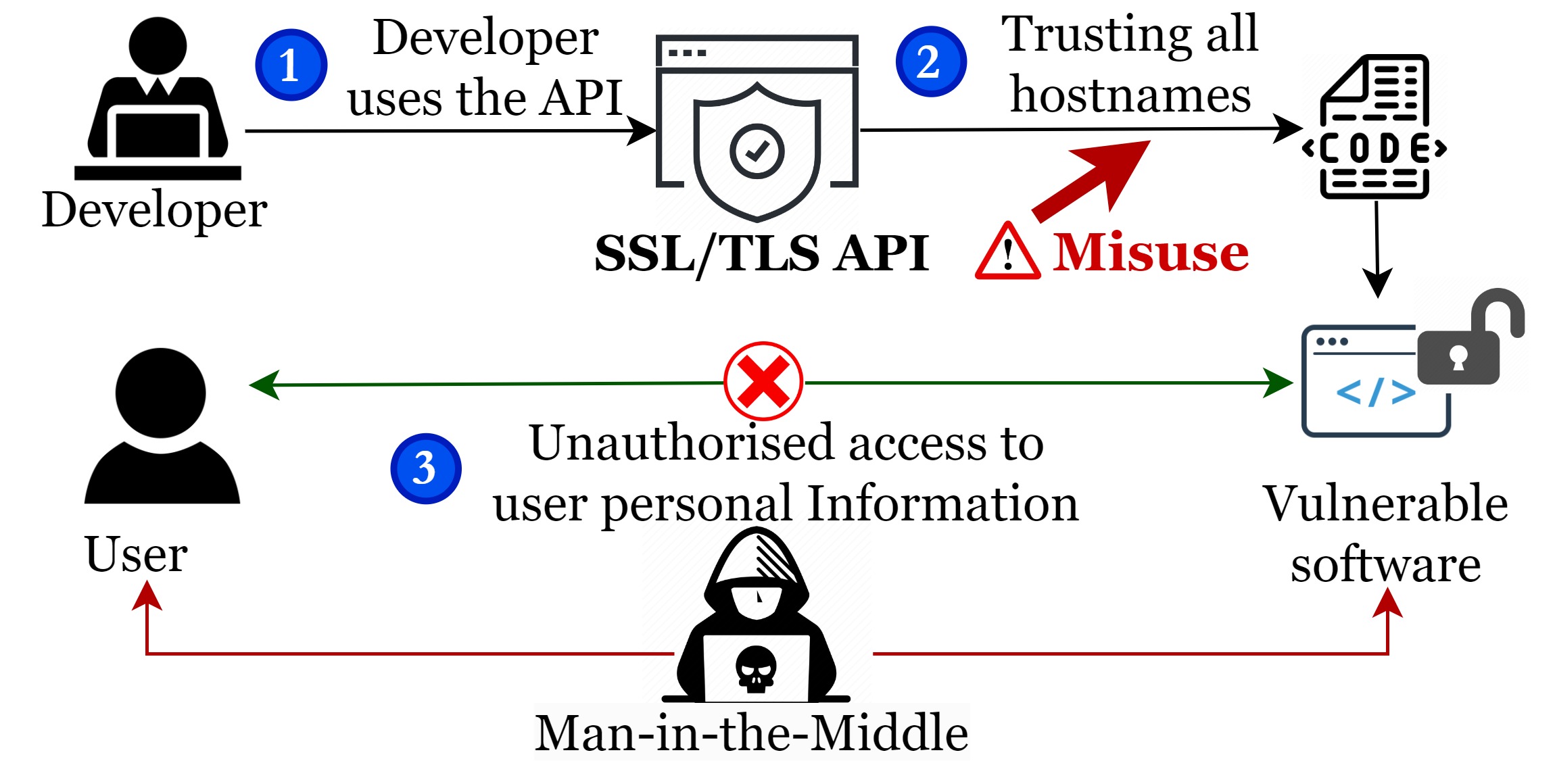ChatGPT's Potential in Cryptography Misuse Detection: A Comparative Analysis with Static Analysis Tools

0
🔎
Sign in to get full access
Overview
- The paper examines the potential of ChatGPT, a large language model, in detecting misuse of cryptographic APIs in Java programs, and compares its performance to traditional static analysis tools.
- The researchers conducted experiments to assess ChatGPT's ability to identify cryptographic vulnerabilities and compared its performance to that of static analysis tools like SpotBugs and FindSecBugs.
- The paper provides insights into the strengths and limitations of ChatGPT for security analysis tasks, and discusses the implications for the use of large language models in software security.
Plain English Explanation
The paper looks at how well ChatGPT, a powerful AI language model, can be used to find security problems in Java programs that use cryptography. The researchers compared ChatGPT's performance to traditional static analysis tools, which are computer programs that analyze code without actually running it.
The key idea is that ChatGPT, with its natural language understanding and generation capabilities, may be able to identify cryptographic vulnerabilities in code more effectively than traditional tools. The researchers ran experiments to see how well ChatGPT could detect security issues, and compared its results to those of two popular static analysis tools, SpotBugs and FindSecBugs.
The paper discusses the strengths and weaknesses of using ChatGPT for this type of security analysis task. It suggests that ChatGPT can be a useful complement to traditional tools, but also has some limitations that need to be considered. Overall, the research provides insights into the potential of large language models like ChatGPT in the field of software security.
Technical Explanation
The paper first provides an overview of Java cryptography and the common misuse patterns that can lead to security vulnerabilities. It then introduces ChatGPT and discusses how its natural language processing capabilities could be leveraged for the task of cryptographic misuse detection.
The researchers designed an experiment to compare ChatGPT's performance to that of two static analysis tools, SpotBugs and FindSecBugs. They collected a dataset of Java code snippets that contained both correct and incorrect use of cryptographic APIs, and used this dataset to evaluate the tools.
For the ChatGPT-based approach, the researchers prompted the model with the code snippets and asked it to classify them as either secure or insecure. They compared ChatGPT's classifications to the ground truth labels and calculated its accuracy, precision, recall, and F1-score.
The results showed that ChatGPT outperformed the static analysis tools in terms of overall accuracy and F1-score. However, the static analysis tools had higher precision, meaning they were better at avoiding false positives. The paper discusses the tradeoffs between ChatGPT's natural language understanding and the rule-based approach of the static analysis tools.
Critical Analysis
The paper acknowledges several limitations of the study. First, the dataset used was relatively small, and the researchers note that larger-scale experiments are needed to further validate the findings. Additionally, the paper does not explore the types of cryptographic vulnerabilities that ChatGPT and the static analysis tools were able to detect, which could provide more insights into their respective strengths and weaknesses.
Another potential concern is the reliance on prompt engineering to elicit the desired behavior from ChatGPT. The researchers note that the performance of the ChatGPT-based approach may be sensitive to the specific prompts used, and that further work is needed to understand how to best leverage large language models for security analysis tasks.
Furthermore, the paper does not discuss the potential for adversarial attacks or the robustness of ChatGPT's classifications. In a real-world setting, an attacker could potentially craft code snippets designed to mislead the model, and the researchers do not address this potential limitation.
Overall, the paper provides a valuable initial exploration of the use of large language models for cryptographic misuse detection, but more research is needed to fully understand the capabilities and limitations of this approach.
Conclusion
The paper presents a comparative analysis of ChatGPT and traditional static analysis tools for the task of detecting cryptographic misuse in Java programs. The results suggest that ChatGPT can outperform the static analysis tools in terms of overall accuracy, but the static analysis tools have higher precision.
The research highlights the potential of large language models like ChatGPT in the field of software security, but also identifies several limitations and areas for further exploration. The paper suggests that ChatGPT could be a useful complement to traditional security analysis tools, but that more work is needed to understand how to best leverage these models for security-critical tasks.
Overall, the paper provides valuable insights into the capabilities and challenges of using large language models for security analysis, and opens up new avenues for research at the intersection of natural language processing and software security.
This summary was produced with help from an AI and may contain inaccuracies - check out the links to read the original source documents!
Related Papers
🔎

0
ChatGPT's Potential in Cryptography Misuse Detection: A Comparative Analysis with Static Analysis Tools
Ehsan Firouzi, Mohammad Ghafari, Mike Ebrahimi
The correct adoption of cryptography APIs is challenging for mainstream developers, often resulting in widespread API misuse. Meanwhile, cryptography misuse detectors have demonstrated inconsistent performance and remain largely inaccessible to most developers. We investigated the extent to which ChatGPT can detect cryptography misuses and compared its performance with that of the state-of-the-art static analysis tools. Our investigation, mainly based on the CryptoAPI-Bench benchmark, demonstrated that ChatGPT is effective in identifying cryptography API misuses, and with the use of prompt engineering, it can even outperform leading static cryptography misuse detectors.
Read more9/11/2024


0
An Investigation into Misuse of Java Security APIs by Large Language Models
Zahra Mousavi, Chadni Islam, Kristen Moore, Alsharif Abuadbba, Muhammad Ali Babar
The increasing trend of using Large Language Models (LLMs) for code generation raises the question of their capability to generate trustworthy code. While many researchers are exploring the utility of code generation for uncovering software vulnerabilities, one crucial but often overlooked aspect is the security Application Programming Interfaces (APIs). APIs play an integral role in upholding software security, yet effectively integrating security APIs presents substantial challenges. This leads to inadvertent misuse by developers, thereby exposing software to vulnerabilities. To overcome these challenges, developers may seek assistance from LLMs. In this paper, we systematically assess ChatGPT's trustworthiness in code generation for security API use cases in Java. To conduct a thorough evaluation, we compile an extensive collection of 48 programming tasks for 5 widely used security APIs. We employ both automated and manual approaches to effectively detect security API misuse in the code generated by ChatGPT for these tasks. Our findings are concerning: around 70% of the code instances across 30 attempts per task contain security API misuse, with 20 distinct misuse types identified. Moreover, for roughly half of the tasks, this rate reaches 100%, indicating that there is a long way to go before developers can rely on ChatGPT to securely implement security API code.
Read more4/8/2024


0
A Qualitative Study on Using ChatGPT for Software Security: Perception vs. Practicality
M. Mehdi Kholoosi, M. Ali Babar, Roland Croft
Artificial Intelligence (AI) advancements have enabled the development of Large Language Models (LLMs) that can perform a variety of tasks with remarkable semantic understanding and accuracy. ChatGPT is one such LLM that has gained significant attention due to its impressive capabilities for assisting in various knowledge-intensive tasks. Due to the knowledge-intensive nature of engineering secure software, ChatGPT's assistance is expected to be explored for security-related tasks during the development/evolution of software. To gain an understanding of the potential of ChatGPT as an emerging technology for supporting software security, we adopted a two-fold approach. Initially, we performed an empirical study to analyse the perceptions of those who had explored the use of ChatGPT for security tasks and shared their views on Twitter. It was determined that security practitioners view ChatGPT as beneficial for various software security tasks, including vulnerability detection, information retrieval, and penetration testing. Secondly, we designed an experiment aimed at investigating the practicality of this technology when deployed as an oracle in real-world settings. In particular, we focused on vulnerability detection and qualitatively examined ChatGPT outputs for given prompts within this prominent software security task. Based on our analysis, responses from ChatGPT in this task are largely filled with generic security information and may not be appropriate for industry use. To prevent data leakage, we performed this analysis on a vulnerability dataset compiled after the OpenAI data cut-off date from real-world projects covering 40 distinct vulnerability types and 12 programming languages. We assert that the findings from this study would contribute to future research aimed at developing and evaluating LLMs dedicated to software security.
Read more8/2/2024


0
Cryptocurrency Frauds for Dummies: How ChatGPT introduces us to fraud?
Wail Zellagui, Abdessamad Imine, Yamina Tadjeddine
Recent advances in the field of large language models (LLMs), particularly the ChatGPT family, have given rise to a powerful and versatile machine interlocutor, packed with knowledge and challenging our understanding of learning. This interlocutor is a double-edged sword: it can be harnessed for a wide variety of beneficial tasks, but it can also be used to cause harm. This study explores the complicated interaction between ChatGPT and the growing problem of cryptocurrency fraud. Although ChatGPT is known for its adaptability and ethical considerations when used for harmful purposes, we highlight the deep connection that may exist between ChatGPT and fraudulent actions in the volatile cryptocurrency ecosystem. Based on our categorization of cryptocurrency frauds, we show how to influence outputs, bypass ethical terms, and achieve specific fraud goals by manipulating ChatGPT prompts. Furthermore, our findings emphasize the importance of realizing that ChatGPT could be a valuable instructor even for novice fraudsters, as well as understanding and safely deploying complex language models, particularly in the context of cryptocurrency frauds. Finally, our study underlines the importance of using LLMs responsibly and ethically in the digital currency sector, identifying potential risks and resolving ethical issues. It should be noted that our work is not intended to encourage and promote fraud, but rather to raise awareness of the risks of fraud associated with the use of ChatGPT.
Read more6/6/2024